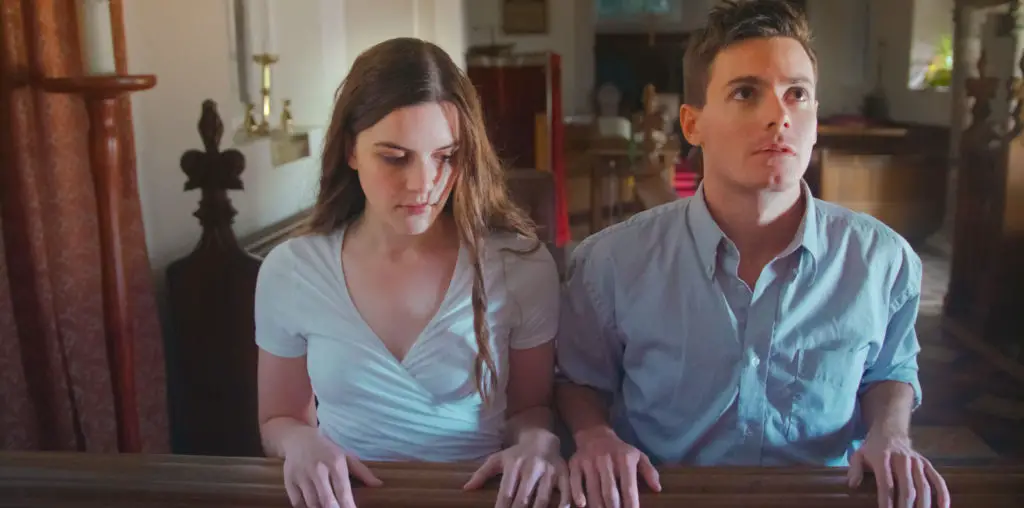
Now in its fifteenth year, Toronto’s Inside Out Lesbian and Gay Film and Video Festival has entered puberty with poise, panache and pride rather than the acne, awkwardness and angst that, more typically, plague a growing body while its hormones rage.
Director Jeremy Podeswa was part of the original volunteer cooperative that laboured for nearly two years before the lights went down in the Euclid Theatre in 1991 and the first Queer Fest lit up the imaginations and aspirations of gay and lesbian filmmakers and their admirers.
Reached in Santa Fe between shoots for an episode of Into the West (Dreamworks/Spielberg/TNT) Podeswa recalled the excitement of creating something new. “Getting it off the ground took time; we thought it would be a smaller deal. Joanne Cormack (first coordinator) kept us moving. Like a true cooperative, there was much discussion. Inside Out became the name because it was the least offensive,” he said. “Back then the crowds were great and diverse—there was a real sense of passion for the work. We managed to screen a number of politically oriented films, but also had some fun.”
Early titles included Jan Oxenberg’s Thank You & Goodnight, Ken Hughes’ Sextet, Rob Epstein’s The Times of Harvey Milk and a slew of experimental and first-attempt shorts. Since 1998, the Queer Youth Digital Video Project has provided a mentorship program for neophyte filmmakers.
The success of the collective’s desire to make queer films more widely available soon required paid staff and infrastructure. By 1996, the not-for profit organization had an active board of directors. That was when long-time supporter Howard Fraiberg (also producer of Cassandra Nicolaou’s Show Me) came on, first as treasurer then as president. Chatting over coffee, he looked back over those frenetic years. “We were faced with making the transition from a small community festival to a much larger organization. In order to secure sponsorships, we had to develop plans that would raise our profile to a much wider audience. A lot was expected of us as board members and a strong, clear vision was needed to take us to the next level. Fortunately, that was when Elle Flanders took on the role as Executive Director. Without her we’d never have become the third largest festival in North America,” he said.
“Joanne Cormack had built Inside Out into an important part of our community. She trained me for a week in our tiny, sixth floor Richmond Street office—then I was on my own. An early challenge was the loss of our venue. But that problem proved to be a blessing in disguise. Thanks to the ongoing support of Viacom, it was arranged for me to meet John Bailey (head of Famous Players). His office was huge—he seemed like the Wizard of Oz, sitting behind his desk and surrounded by spectacular paintings. But his generosity was also large. With his help and support, we made the move from Little Italy to the multi-screen Cumberland Theatre: Homos settling down in trendy Yorkville—that was a treat. I was absolutely delighted to have this opportunity of living my mantra: ‘Give them what they think they want; teach them what they don’t know they need,’” she confided.
The current brain trust of Inside Out is Executive Director Scott Ferguson and Chief Programmer Kathleen Mullen. For the past five years they have used their considerable energy and dedication to keep Inside Out moving gaily forward.
“It’s all about community,” said Mullen as we “took a meeting” just hours before the 2005 media launch. “With the vital assistance of our volunteer screening committee, we’re able to give every entry a real chance before we whittle down the 700 entries by nearly two-thirds. And while we have a very strong Canadian contingent, we continue see work that is truly global. Germany is this year’s featured country, but we’re also excited to have films from Australia, India and even one from Iraq.”
“Over the past few years we’ve become the victims of our own success,” said Ferguson. “Because so many of our original filmmakers have been noticed, gone on the bigger and better productions and have won countless awards, the screening fees have also skyrocketed. Still, with more and more industry people attending each year, that trend will likely continue.”
With a budget of $700,000 and six full-time staff, Inside Out has become a valuable addition to Toronto’s artistic and economic life. But nobody’s getting rich: Ferguson estimates that his budget needs to more than double if the festival is to achieve its full potential. There’s always more to do.
“Pow! Wow!, curated by Adam Garnet Jones, is a program of commissioned videos about queer Aboriginal artists—finally we’ve a voice for 1st Nations,” said Mullen. “It’s one of many ways we nurture filmmakers. In the future, we want to strengthen our diversity through specific programs and more invitationals.”
“Absolutely,” agreed Ferguson. “Making people aware of the work and giving them the opportunity to see the wealth and variety of talent will always be a priority. Somehow we’ll find the resources to nurture the artists so that they can make film. If there’s no work, then there’s no festival.”
And, in 2005, what work there. Kicking off with George Bamber’s The Mostly Unfabulous Social Life of Ethan Green, the German-focussed fest includes Kreuzpaintner’s eye-candy confection Summer Storm, a controversial documentary Hidden Führer: Debating the Enigma of Hitler’s Sexuality, Hormann’s soccer spoof Guys with Balls, as well as Uekrongtham’s spectacular Beautiful Boxer, before the closing gala buzz-rich Côte d’Azur.
With fifteen years, er, under its belt, and an explosion of new filmmakers eager to strut their stuff, the future for Inside Out looks positively gay!
